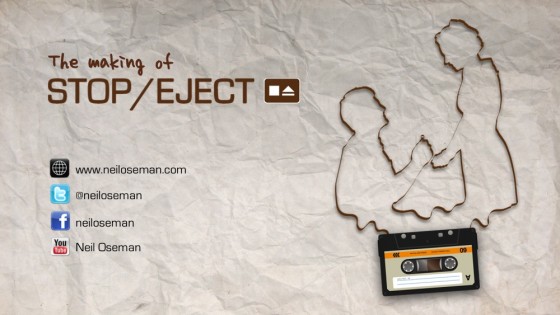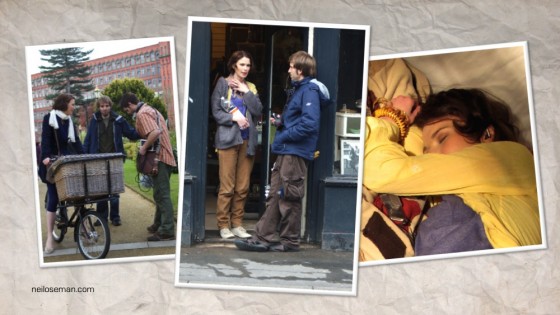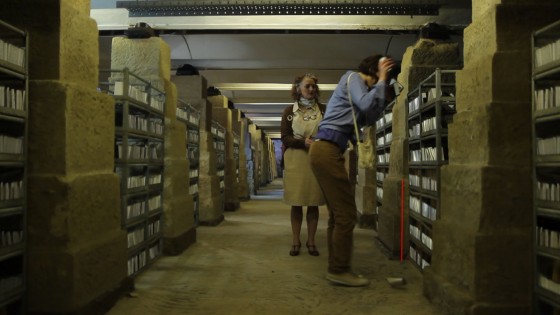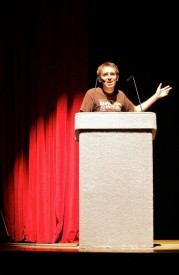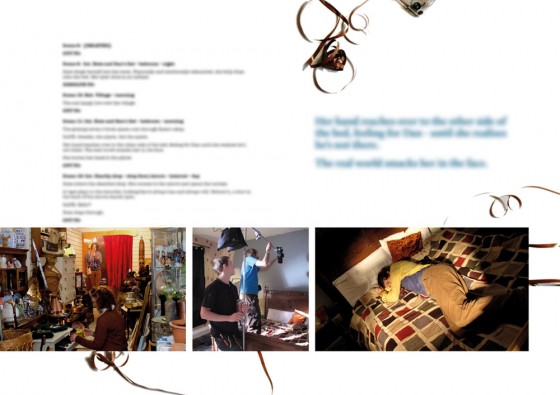Borderlines Film Festival draws to a close this weekend. The UK’s largest rural film festival, centred around The Courtyard here in Hereford, is an event I have a long-standing association with. At the inaugural festival in 2003 I had a little stall selling VHS copies of The Beacon and displaying a few pieces of early concept art for an ambitious fantasy action movie called Soul Searcher. Two years later Soul Searcher premiered at Borderlines with great success. (Read my blog entry in which I total up the Ego Puff Points I acquired that weekend.)
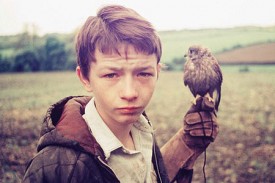
Aside from a screening of Stop/Eject’s trailer, my involvement in this year’s festival was purely spectatorial. And although I normally avoid reviewing films on this site, I’m going to make an exception and say a few words about each of the events and screenings I’ve seen at Borderlines 2013. I should point out that Borderlines isn’t a film festival in the normal sense of the term; rather than inviting submissions of unreleased work, the organisers choose the best films released in the last twelve months along with some classics.
Chris Menges in Conversation
Chris is the Herefordshire-born director of photography behind Kes, The Reader, Notes on a Scandal, The Killing Fields and many others. I’m embarrassed to say I haven’t seen a single one of his films, but I was still keen to attend to further my understanding of the art of cinematography. In this respect I was slightly disappointed, as time constraints and a quite understandable desire not to bore what was largely a lay audience meant that there was little opportunity for Chris to get into the nitty-gritty of his approach to lighting. That being said, there were one or two useful gems and I came away with a general impression of an extremely modest man with a profound respect for the fragility of natural light and a gentle touch in moulding it.
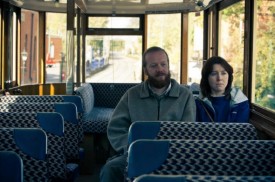
Sightseers
Directed by Ben Wheatley (The Kill List) and starring Alice Lowe (Garth Marenghi’s Dark Place), Sightseers is a black comedy about a woman who escapes her overbearing mother to go on a caravanning holiday with her closet pscyhopath of a boyfriend (Steve Oram). The boyfriend promptly begins murdering people at the slightest provocation (e.g. littering) and Lowe soon joins in in an attempt to impress him. While not the kind of film I’d normally choose to see, I’d heard good things about it and, sure enough, it was great fun. Lowe and Oram, who also wrote the script, give brilliantly judged comic performances in a film which soundly lampoons the stereotypical British holiday (rain, crap caravans, even crapper tourist attractions). Heartily recommended.
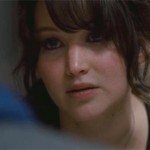
Silver Linings Playbook
Winning Best Actress for Jennifer Lawrence at the Academy Awards and Best Adapted Screenplay for David O. Russell (who also directs) at the Baftas, Silver Linings Playbook has certainly been much talked about in recent weeks. I was surprised to find the film is really just a formulaic romantic comedy, albeit one that starts off in darker territory than most. Bradley Cooper plays a manic depressive just out of a psychiatric hospital who strikes up a relationship with Lawrence’s recently widowed character after she tells him she can get a letter to his estranged wife. In return, Cooper must learn to dance so he can partner with Lawrence in an upcoming contest. Silver Linings Playbook is solidly acted by both the leads and the great supporting cast, which includes Chris Tucker and Robert de Niro. It’s also consistently funny throughout, but like many romcoms it sheds its unique elements as it enter its third act – forgetting the mental health issues of its lead characters – in order to play out the same old clichés. This is particularly disappointing from such a lauded film, but depsite this flaw I thoroughly enjoyed the movie.

Blackmail
Although not a particular fan of Hitchcock, I was keen to see Blackmail – one of the portly auteur’s silent films – because it was a unique opportunity to see a movie with live musical accompaniment. This came courtesy of Stephen Horne, a master of the art – so much so that he somehow played the flute and the piano simultaneously at a couple of points. What staggered me was the revelation that there was no score; the music was entirely improvised. As for the film itself, it had been digitally remastered to such a high quality that I sometimes forgot that I was watching a movie over 80 years old – often only the captioned dialogue, under-cranked gaits and occasional clunky pacing gave it away. The cinematography was beautiful, with some typically inventive camera moves from Hitchcock and a lot of charming humour which held the attention despite a very slight plot (detective’s girlfriend commits murder in self-defence and tries to escape the law). All in all, this screening was an enriching experience and it was very gratifying to see the accompanist’s amazing art kept alive and kicking.
A Liar’s Autobiography: The Untrue Story of Monty Python’s Graham Chapman
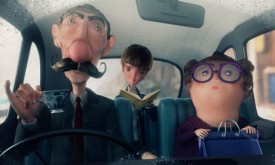
Best known as the dead one from Monty Python, Graham Chapman succumbed to cancer in 1989, but not before writing his autobiography and recording it as an audiobook. That recording forms the spine of this film, as Chapman narrates his (alleged) life story from beyond the grave while fourteen different animation houses provide the visuals. While not a Monty Python film, there are many common traits – surreality, silliness, rudeness and the vocal talents of messrs. Jones, Gilliam, Palin and Cleese (but not Idle). In a non sequitur worthy of Monty Python, Cameron Diaz cameos as the voice of Sigmund Freud. And like much of the Pythons’ work, A Liar’s Autobiography is never quite as funny as you hoped it would be. This fact, coupled with a highly episodic narrative, meant the film was just starting to outstay its welcome when it wrapped up and ended. Nevertheless, it’s a delightfully creative film and one which seems a fitting tribute to a man who was not the messiah, but was definitely a very naughty boy.
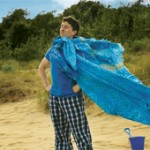
Herefordshire Media Network
The network presented five pieces by its members: four short films and the trailer for Stop/Eject. The first short was Injured Birds, a gentle tale of an 11-year-old boy’s search for adventures in a rural town during the summer holidays. This was the second time I’d seen it, and I again enjoyed its charm, warmth and humour. Two short films directed by Rachel Lambert for The Rural Media Company were screened, both made on a participatory basis with people living in sheltered housing. Getting Close was a low-key drama highlighting some of the issues faced by the participants, while A Letter Every Day took the form of an oral history in which an elderly lady recounted her brief marriage to a man who was tragically killed in the second world war. This latter was an engaging story and cleverly illustrated with tableaux of miniature figurines found by the camera amongst the ornaments of the lady’s living room. But the highlight of the evening for me was Men Can’t Make Beds, a live action slapstick comedy in the vein of Tex Avery cartoons. Directed by David Jones of Wind-up World Films, the film made great use of a delightfully rubber-faced lead actor (Lawrence Russell) and exaggerated music and sound design to produce five minutes of wonderful silliness.

Side by Side
Keanu Reeves produces and interviews for this documentary about the transition from photochemical to digital technology, not just in capturing motion picture images but in editing them, manipulating them for visual effects, exhibiting them and archiving them. Views are canvassed from some of the biggest names in the business: George Lucas, who drove much of the change, James Cameron, a staunch supporter of digital 3D filmmaking, Christopher Nolan, one of the few directors still shooting on film and physically cutting his negative, and many others. Sadly, the film doesn’t let any of these filmmakers go into great depth, instead giving a history of the last twenty years’ technical upheavals, with which most viewers (if they’re interested enough to see Side by Side in the first place) will already be familiar. So while containing a few telling nuggets (such as several DPs bemoaning the lack of mystique and power they now wield when everyone can see the images they’re capturing immediately on set), this documentary overall has the feel of a slightly overlong DVD bonus feature.
Thanks to the team at Borderlines for a great festival.
